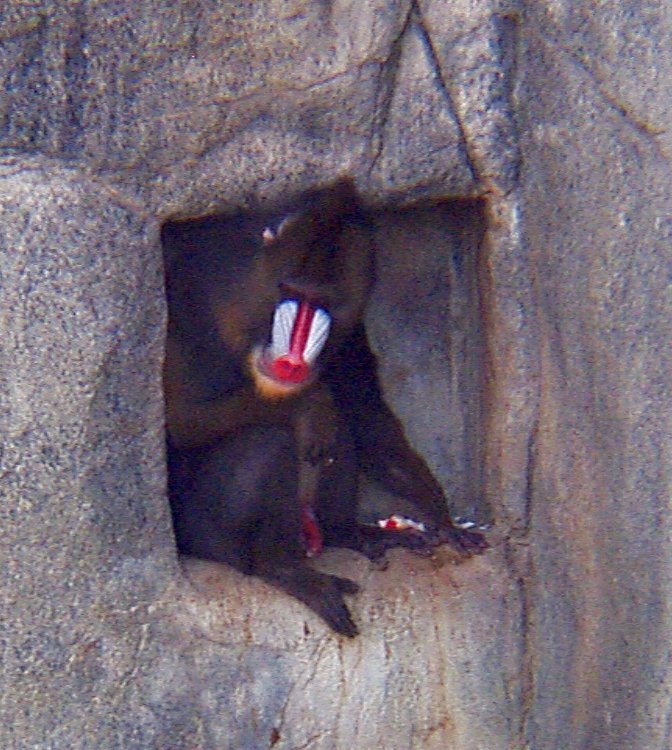| Name: Mandrill | |
| Scientific name: Mandrillus sphinx | |
| Range: Equatorial West Africa | |
| Habitat: Thick rain forest | |
| Status: Endangered. hunted, lost habitat | |
| Diet in the wild: fruits, plants, tree bark, and leaves | |
| Diet in the zoo: monkey chow, apples, oranges, potatoes (sweet and white), leaves, lettuce (romaine and iceberg), tomatoes, and bark. | |
| Location in the Zoo: World of Primates |
| Comments about the Mandrills of
the Fort Worth Zoo.
The care-taker
that came to my aid was Jenny. She was notably polite and answered
all of my questions fully. I asked Jenny many questions about
the group. Some of them were about what they fed them, how many
they give birth too, sleeping habits, aggressiveness, use of vocals,
their senses relative to humans, and things they do in the wild.
The answers I received were as follows:
|
| Related Links:
Lincoln
Park Zoo
|
|
|
Source list:
|
WhoZoo Home Animal Index |
